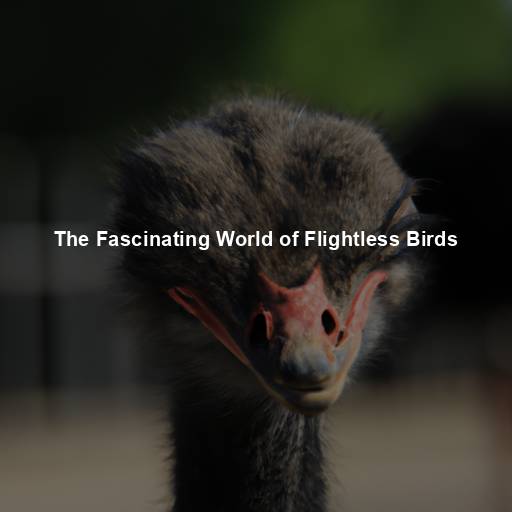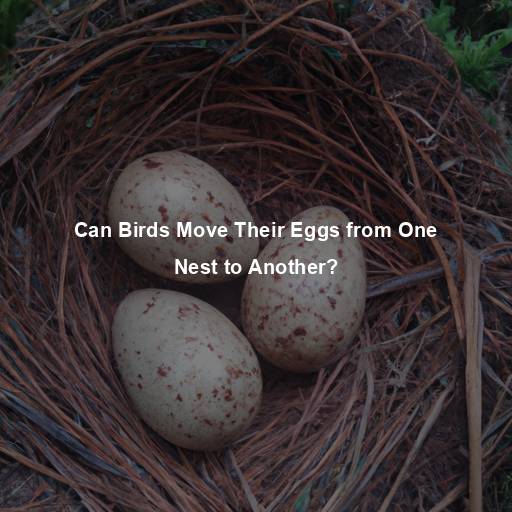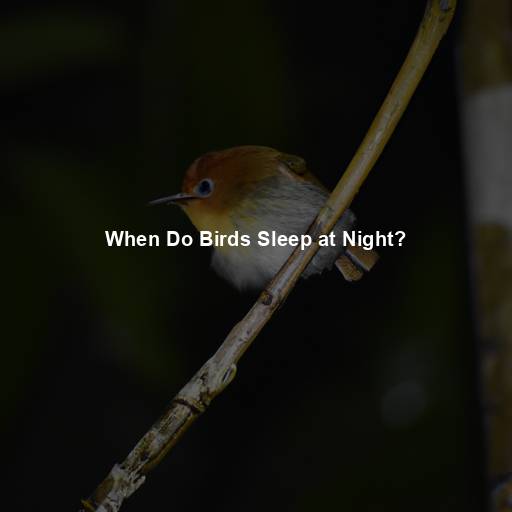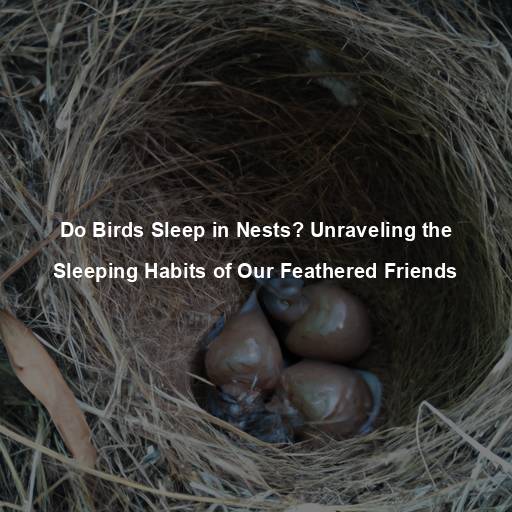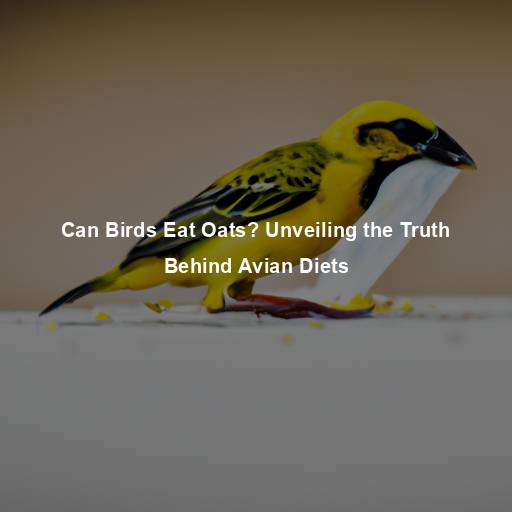The Fascinating World of Flightless Birds
Last Updated on August 1, 2023 by Evan
Contents [hide]
- 1 Understanding Birds That Can’t Fly
- 1.1 What Makes a Bird Flightless?
- 1.2 Flightless Birds: A Diverse Group
- 1.3 The Reasons Behind Flightlessness
- 1.4 Conservation Efforts and Future Outlook
- 1.5 Adaptive Radiation and Flightlessness
- 1.6 The Island Effect
- 1.7 Selective Pressures
- 1.8 Morphological Adaptations
- 1.9 Flightlessness as an Evolutionary Strategy
- 1.10 Flightless Birds and Human Interaction
- 2 Intriguing Flightless Birds Around the World
- 3 The Wonders of Flightless Birds
- 4 FAQs – Birds That Can’t Fly
- 4.1 What are birds that can’t fly called?
- 4.2 Are flightless birds extinct?
- 4.3 Why can’t flightless birds fly?
- 4.4 Are there any advantages to not being able to fly?
- 4.5 Can flightless birds live in different habitats?
- 4.6 Can flightless birds defend themselves without flying?
- 4.7 Are flightless birds good parents?
- 4.8 Can flightless birds live alongside birds that can fly?
Understanding Birds That Can’t Fly
The mesmerizing sight of birds gracefully navigating the vast expanse of the sky has long been admired by humans. Yet, amid this awe-inspiring spectacle, there exists a subset of birds who have defied convention and abandoned the art of flight. These enigmatic creatures have captivated the imaginations of explorers, researchers, and those who seek to unravel the mysteries of the natural world. Join us on a mesmerizing journey into the captivating realm of flightless birds, as we unravel the secrets behind their astounding adaptations, their diverse habitats, and the perplexing question of why they have abandoned the skies above.
What Makes a Bird Flightless?
Flightlessness in birds can be attributed to a variety of factors, including evolutionary adaptations, environmental conditions, and anatomical limitations. While most birds have developed wings and a lightweight body structure that enables them to fly, flightless birds have undergone specific changes that hinder their ability to take to the skies.
Evolutionary Adaptations
Birds have, throughout the course of unfathomable epochs, encountered and embraced various evolutionary adaptations which have led to the manifestation of flightlessness. These unique transformations have bestowed upon select avian species the ability to flourish and persist within habitats wherein the art of soaring through the ethereal realms is neither deemed requisite nor advantageous. A remarkable phenomenon indeed, as it unfolds upon closer examination, wherein some of these birds have transitioned from ancestors who once elegantly glided through the azure skies, only to relinquish this formidable skill over eons, owing to the indelible impact of environmental alterations or shifts in their very way of life.
Flightless Birds: A Diverse Group
Flightless birds are found in various parts of the world, each with its unique characteristics and adaptations. Let’s take a closer look at some of the most well-known flightless bird species.
Emperor Penguins
In a vast realm of icy wonders, the Emperor Penguin reigns supreme with its majestic stature and captivating presence. Thriving in the treacherous landscapes of the Antarctic, this enchanting creature defies the odds, embracing the tumultuous cold and unforgiving elements as its sole companions. Though devoid of the gift of flight, these resilient beings have harnessed evolution’s whims, donning formidable flippers that serve as their aquatic wings. In a mesmerizing display of adaptability and grace, they voyage through the depths, utilizing their winged appendages as potent vessels that propel them swiftly in pursuit of sustenance.
Ostriches
Step into the mesmerizing world of ostriches, the majestic giants of the grasslands. These extraordinary creatures captivate us with their effortless speed, sprinting at astonishing speeds of up to 60 miles per hour (97 kilometers per hour). With their long, sturdy legs and robust bodies, ostriches effortlessly glide through their natural habitat, leaving us in awe of their agility. While they may not have the ability to take flight, their wings possess an enchanting duality, providing them with both balance and a mesmerizing display during courtship rituals.
Kiwi Birds
Native to New Zealand, Kiwi birds are intriguing flightless birds that have become iconic symbols of the country. These small, nocturnal birds possess a long, slender beak that they use to forage for food, such as insects and worms. Despite their flightlessness, Kiwis have evolved strong leg muscles, allowing them to run swiftly and navigate through dense forests. Interestingly, their feathers are more hair-like in texture, resembling fur rather than traditional bird feathers.
The Reasons Behind Flightlessness
Flightlessness in birds can be attributed to various factors, including changes in environment, lack of predators, and the availability of abundant food sources. Let’s explore some of the reasons why certain bird species have lost their ability to fly.
Island Evolution
The fascinating world of flightless birds unveils its secrets on remote islands, where enchanting creatures have blossomed in the absence of natural foes. Unburdened by the necessity of flight, these birds have embarked on an extraordinary evolutionary journey, forfeiting their wings along the way. Secluded from the hustle and bustle of competition and sheltered from the looming presence of mighty predators, they have gracefully embraced their island realms, adapting to their unique landscapes with bewildering prowess.
Habitat and Food Sources
In a remarkable twist of nature’s tapestry, flightless birds have carved out their existence in habitats that teem with earthly abundance, rendering the lofty act of flying unnecessary for survival. Consider the endearing Kiwi bird, whose diet primarily consists of delectable insects and plump worms nestled in the vast expanse of the forest floor. Meanwhile, the graceful ostriches gracefully graze upon grasslands verdant with an array of succulent vegetation. These avian wonders have harnessed the art of efficient foraging on solid ground, defying the traditional reliance on flight for procuring sustenance.
Conservation Efforts and Future Outlook
The world we inhabit is adorned with the enigmatic presence of flightless birds, their very existence a living testament to the intricate tapestry of nature’s intricate design. Alas, these extraordinary avian beings, with their vulnerable wings clipped by the relentless onslaught of human activities, find themselves teetering on the precipice of extinction. In this perplexing juncture, we must embrace the invaluable worth of these ethereal creatures, weaving a shield of conservation around their habitats, thus securing their ethereal legacy for the generations yet to come.
Adaptive Radiation and Flightlessness
Flightlessness in birds can be a fascinating consequence of adaptive radiation, where a single ancestral species branches out into multiple species with unique adaptations to their respective ecological niches. Imagine a scenario where a population of birds migrates to an environment where flying is simply not needed or even feasible. This prompts transformative changes in these birds, leading to the development of specialized features and behaviors that allow them to thrive without taking to the skies.
The Island Effect
In the mystical realm of islands, where the forces of nature dance in a whimsical symphony, a peculiar transformation unfolds. Here, flightless birds emerge as captivating beings, a living enigma to perplex and astonish. These islands, stripped of large predators, offer a sanctuary where the winged creatures cast off their aerial prowess and embrace a grounded existence. Gradually, they adapt and evolve, channeling their energy towards unparalleled characteristics that ensure their survival amidst abundant feasts that nature graciously offers.
Selective Pressures
The phenomenon of birds losing their ability to fly is a fascinating tale of evolutionary jigsaw puzzles. As nature weaves its intricate patterns, flightlessness emerges as an enigmatic consequence of the relentless pressures shaping our feathered friends. The tremendous energy demanded by aerial acrobatics prompts some avian species to pivot their focus towards alternative survival strategies, such as cultivating powerful legs for high-speed sprints or fashioning specialized beaks for exquisite dining experiences. This captivating process unravels a world where predators’ absence paves the way for the emergence of extraordinary adaptations, leaving us perplexed but utterly enthralled.
Morphological Adaptations
Flightless birds have undergone remarkable morphological adaptations that distinguish them from their flying counterparts. These adaptations are a testament to the remarkable plasticity of bird anatomy and the ability of these creatures to adapt to different environments. Some of the notable morphological adaptations seen in flightless birds include:
Reduced Wings
Flightless birds possess wings that are noticeably diminished in comparison to their airborne counterparts. These wings, resembling tiny vestiges, bear little relevance to flight and are seemingly employed for equilibrium, elaborate courtship exhibitions, or even as implements for distinctive activities. Their perplexing purpose adds a touch of enigma to these intriguing creatures.
Enhanced Leg Structure
To compensate for their lack of flight, flightless birds have developed strong and robust legs. These legs enable them to navigate various terrains, such as dense forests or open grasslands, with agility and speed. Some flightless birds, like ostriches and emus, have long and powerful legs that allow them to cover vast distances on foot.
Modified Feathers
Feathers in flightless birds often differ in structure from those of their flying counterparts. These modifications may include a more hair-like texture, reduced or absent flight feathers, or alterations in feather coloration. These changes in feather structure may help flightless birds adapt to their specific environments and lifestyles.
Flightlessness as an Evolutionary Strategy
You might think that not being able to fly would put birds at a disadvantage, but think again! It turns out that flightless birds have discovered a clever evolutionary trick. By giving up the ability to soar through the skies, they’ve found a way to carve out unique niches in the animal kingdom that their winged counterparts simply can’t reach. This unexpected strategy has allowed flightless birds to tap into untapped resources and avoid fierce competition, giving them an edge in survival and reproduction.
Flightless Birds and Human Interaction
The intricate dance between humans and flightless birds echoes through the annals of time, leaving behind a tapestry of wonder and despair. An orchestration of actions, both intentional and unwitting, has shaped the destiny of these wingless wonders. From the creaking gates of non-native predators to the remorseless onslaught of habitat destruction, their plight hangs heavy in the air. Yet, like a phoenix rising from the ashes, human hands extend in earnest to preserve what remains, etching a glimmer of hope onto the canvas of existence.
Intriguing Flightless Birds Around the World
Flightless birds can be found in various regions across the globe. Each species has its own unique characteristics and adaptations that make them fascinating subjects of study. Let’s explore a few more flightless bird species and the remarkable traits that set them apart.
Cassowaries
Native to the rainforests of New Guinea and northeastern Australia, cassowaries are large, flightless birds known for their vibrant colors and impressive casques on their heads. These territorial birds play a vital role in maintaining the balance of their ecosystems by dispersing seeds and aiding in forest regeneration.
Rheas
Rheas, native to South America, are similar in appearance to their ostrich and emu relatives. These large flightless birds are excellent runners and can reach impressive speeds. Rheas are also known for their intricate courtship rituals, with males building nests and incubating the eggs while females move on to find other mates.
Kakapos
Kakapos, also known as owl parrots, are endemic to New Zealand and are one of the rarest and most critically endangered flightless birds in the world. These nocturnal and ground-dwelling parrots have a unique ability to climb trees and blend into their surroundings. Their distinct green plumage and endearing personalities have captured the hearts of conservationists worldwide.
Rails
Explore the enchanting world of rails, a captivating and diverse group of flightless birds dwelling in an array of exotic habitats. From the tranquil wetlands to the lush forests and sprawling grasslands, these enchanting creatures have adapted marvelously, with their slender bodies, elongated legs, and robust beaks. Uncover the magnificent takahe of New Zealand, the epitome of resilience, and journey back in time to the mysterious dodo of Mauritius, a tragic tale that ignites curiosity and captures the imagination. Join us as we unravel the perplexing beauty of these remarkable rail species.
The Wonders of Flightless Birds
Flightless birds stand as a stunning testament to the boundless variety and resilience present in the avian realm. Though bereft of the ethereal ability to traverse the heavens, these extraordinary creatures have undergone extraordinary transformations, developing awe-inspiring characteristics and behaviors that enable them to flourish within their distinct habitats. Studying their distinctive adaptations not only unravels the intricate tapestry of evolution, but also opens our eyes to the remarkable means by which living organisms ingeniously adjust to their ever-changing surroundings. The perplexing world of flightless birds beckons us to embolden our understanding of the wonders of nature’s ingenuity.
As we continue to explore the wonders of flightless birds, let us appreciate their beauty, resilience, and the important role they play in our natural ecosystems. By understanding and protecting these captivating creatures, we can ensure their survival and contribute to the conservation of our planet’s biodiversity.
FAQs – Birds That Can’t Fly
What are birds that can’t fly called?
Birds that can’t fly are commonly referred to as flightless birds. These species have either lost their ability to fly over time or have evolved without the ability to take flight.
Are flightless birds extinct?
No, flightless birds are not extinct. While some flightless bird species have unfortunately gone extinct, there are still a number of living flightless bird species today. These include popular examples such as penguins, ostriches, emus, kiwis, and cassowaries.
Why can’t flightless birds fly?
Flightlessness in birds can occur due to several reasons. Some flightless birds have lost their ability to fly as a result of natural selection and evolution. Over time, these birds have adapted to thrive in environments where flight is unnecessary or even disadvantageous. In contrast, other flightless birds, like penguins, have evolved to be excellent swimmers instead, relying on their streamlined bodies and webbed feet for mobility in water.
Are there any advantages to not being able to fly?
Yes, flightless birds have certain advantages as a result of their inability to fly. These advantages vary depending on the species and their specific environment. Flightlessness often allows these birds to conserve energy since flying requires a significant amount of metabolic resources. Additionally, flightless birds have evolved other skills and adaptations to compensate for their inability to fly, such as specialized running or swimming abilities.
Can flightless birds live in different habitats?
It’s truly fascinating how flightless birds have defied expectations and adapted to such diverse habitats. Take penguins, for instance, these adorable creatures have made frigid regions like Antarctica and southern South America their home. On the other hand, ostriches have thrived in arid and open landscapes. But wait, there’s more! Flightless birds have also conquered forests, grasslands, islands, and even coastal areas. Their ability to thrive in such varied environments truly leaves us in awe.
Can flightless birds defend themselves without flying?
Flightless birds have developed alternative defense mechanisms since they cannot rely on flight to escape or evade predators. Some flightless birds, like ostriches, have powerful legs that they use for running, allowing them to reach impressive speeds and escape danger. Others, such as cassowaries, have strong and dangerous claws that they use for self-defense. Additionally, many flightless birds have evolved to be camouflaged or exhibit behaviors that help them blend into their surroundings, increasing their chances of survival.
Are flightless birds good parents?
There is something truly awe-inspiring about flightless birds and their unwavering commitment to parenting. Take penguins for instance, these charming creatures go to great lengths to create cozy nests and equally share the responsibilities of incubating eggs. It’s heartwarming to witness both the male and female penguins taking turns to nurture, feed, and safeguard their precious offspring. Likewise, kiwi birds have their own unique approach to parenting, with males assuming the role of devoted caretakers by single-handedly incubating their eggs. These intriguing relationships in the avian world remind us of the beautiful complexities and mysteries of nature.
Can flightless birds live alongside birds that can fly?
Yes, flightless birds can coexist with their flying counterparts. In many cases, flightless species occupy specific niches within their ecosystems that flying birds do not typically fulfill. This allows for a diversity of bird species to inhabit the same areas without excessive competition. However, flightless birds often face different challenges and must employ different strategies for survival compared to their flying counterparts.

